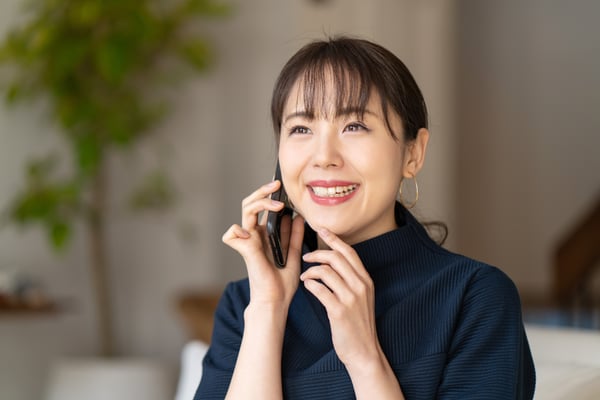Practicing at the Top of Your Pharmacist License
Pharmacists invest years of hard work to earn their degrees and licenses. Finally, there’s a way to put all their skills, expertise, and clinical education to work. From home!

What it means to practice at the top of your pharmacist license
As a clinical pharmacist, practicing at the top of one’s license means providing quality patient care. It also means utilizing your education, training, and skills to their fullest extent, collaborating with other healthcare professionals to ensure the best patient outcomes.
For decades, pharmacists have been relegated to behind the counters of retail pharmacies. While dispensing is unquestionably important, it’s not the best or most efficient use of pharmacists’ time. With advances in artificial intelligence and robotics, it’s possible that dispensing will no longer be the responsibility of a pharmacist, allowing them to focus their time and effort on tasks that their years of education and experience equipped them for.
Here are some key strategies for practicing at the top of your license as a pharmacist.
Practical steps for clinical pharmacists to stay at the top of their license
For pharmacists to make the most of their careers and maximize patient outcomes, it’s important that they practice to their full potential–at the top of their license.
Stay up to date with current guidelines and best practices
Clinical pharmacists are the medication experts on a healthcare team, and staying current with the latest guidelines and best practices is crucial to deliver the best care for patients. As a pharmacist, it's essential to stay up to date with the latest research and guidelines specific to pharmacotherapy.
Board certifications are a great way to achieve professional development. The BPS Board Certified Pharmacotherapy Specialist(BCPS) program validates that the clinical pharmacist in question excels at the safe, appropriate, and economical use of medications as part of the interprofessional treatment team. To maintain the certification, pharmacists must earn 120 continuing education (CE) credits in 7 years offered by the American College of Clinical Pharmacy, which ensures the pharmacist is up to date on all new literature.
One great way to access these educational resources is through Aspen RxHealth’s Professional Development program which is available to all members of the Aspen RxHealth Pharmacist Community. Another great evidence-based drug reference is Lexicomp because it’s continuously updated with the latest and most relevant medication information.
By staying informed, you can provide the most up-to-date recommendations and interventions to optimize medication therapy for your patients.
Collaborate with other healthcare professionals
Collaboration is key to practicing at the top of your license. Even as a remote pharmacist, you work as part of a healthcare team, which includes physicians, nurses, and other healthcare professionals. By collaborating with others, you not only gain a greater understanding of your patient’s condition and needs, but you can also ensure your patients receive the best possible care.
Aspen RxHealth provides opportunities to collaborate with other clinicians by attending the daily huddles available through The Grove. The huddles are the perfect time to ask questions of your fellow clinical pharmacists. They also have the bonus benefits of allowing you to learn more about the Aspen RxHealth platform, and get information about new features and updates from the Aspen RxHealth team.
You can also learn and gain insights from the QA team’s orientation sessions. These aren’t only for new Aspen RxHealth pharmacists but also a great tool for pharmacists looking for a refresher on the latest features and functionality available through the app.

Provide patient education
Clinical pharmacists are often the most accessible clinicians in healthcare. This rings even truer with the adoption of digital pharmacy platforms such as Aspen RxHealth, with remote pharmacists who are accessible to their patients via mobile devices. Further, they’re the members of the care team with the most holistic view and understanding of all medications. While patients rightfully trust the input of their primary care physician, PCPs may not always have the full scope of medication information necessary to answer patient questions. This puts remote clinical pharmacists in a unique position to know the whole clinical picture of the patient, not just fragments.
Educating patients and their families about their medications can help ensure that they understand why they are taking the medication, how to take it properly, and what to expect regarding potential side effects.
Patient education can also help to improve medication adherence, as patients who understand their medications are more likely to take them as prescribed. Further, because you have a holistic view of your patient’s history and needs, and because Aspen RxHealth’s matching model pairs clinical pharmacists with patients who share demographics, these relationships can help provide patients with specific, personalized information about their health concerns and needs.
Tips for patient education:
- Use easy-to-understand language: The average American is at a 7th or 8th grade reading level. To deliver clear and easy-to-understand language, pretend every caregiver/patient is a 7th grade student.
- The teach-back method: After counseling sessions, ask, “Can you tell me what you learned today”?
- Authenticity/relatability: What personal story can you share to help the patient connect with you on a deeper level?
- Listen: Most patients want to be heard and know their concerns are validated.
- Proactive issue identification
By working to proactively identify issues with patients’ medications before they progress, you can save untold healthcare costs and maintain patients’ quality of life. Pharmacists are uniquely qualified to spot medication problems early and work cross-functionally with other clinicians to correct them.
In this way, pharmacists can improve patient outcomes, promote patient safety, and enhance the overall quality of healthcare services.
Getting involved in pharmacy organizations.
As consulting or remote pharmacists, you may not have access to the kind of team you’ve had in the past and this makes pharmacy organizations even more valuable. Collaboration is key and colleagues are essential.
Pharmacy organizations such as AMCP, APhA, ASCP, and Aspen RxHealth can provide valuable resources, education, and networking opportunities, all of which can help clinical pharmacists stay up to date with the latest advances in pharmacy practice while improving patient care.
Pharmacy organizations can also provide remote pharmacists with opportunities to get involved in advocacy and public policy.
Involvement in advocacy efforts can also help pharmacists stay informed about public policy issues that impact their profession and their patients while providing opportunities to voice opinions and concerns.
How staying at the top of your pharmacist license impacts patient care
Your education, training, and skills, when used to their fullest extent, can become powerful tools to optimize medication therapy and improve patient outcomes. By working as part of a healthcare team and collaborating with providers and caregivers/patients, you can ensure that your patients receive comprehensive care that addresses their unique needs.